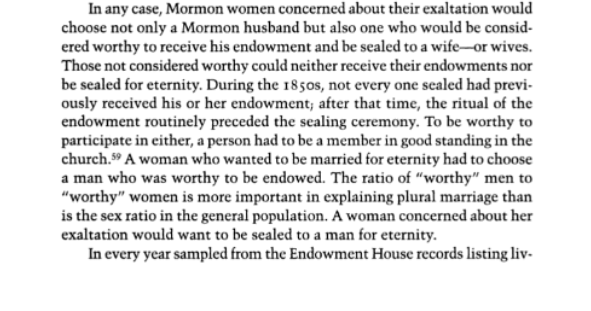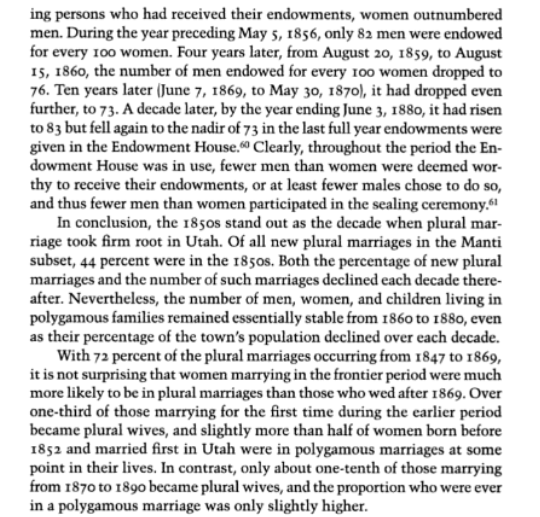Kathryn Daynes reports that temple-endowed women outnumbered men in 1850-1880 Utah.
- Type
- Book
- Source
- Kathryn Daynes LDS
- Hearsay
- Secondary
- Reference
Kathryn Daynes, More Wives Than One: Transformation of the Mormon Marriage System, 1840-1910 (Chicago: University of Illinois Press, 2001), 113-114
- Scribe/Publisher
- Kathryn Daynes
- People
- Kathryn Daynes
- Audience
- Reading Public
- Transcription
In any case, Mormon women concerned about their exaltation would choose not only a Mormon husband but also one who would be considered worthy to receive his endowment and sealed to a wife-or wives. Those not considered worthy could neither receive their endowments nor be sealed for eternity. During the 1850s, not every one sealed had previously received his or her endowment; after that time, the ritual of the endowment routinely preceded the sealing ceremony. To be worthy to participate in either, a person had to be a member of good standing in the church. A woman who wanted to be married for eternity had to choose a man who was worthy to be endowed. The ratio of "worthy" men to "worthy" women is more important in explaining plural marriage than is the sex ratio in the general population. A woman concerned about her exaltation would want to be sealed to a man for eternity. In every year sampled from the Endowment House records listing living persons who had received their endowments, women outnumbered men. During the year preceding May 5, 1856, only 82 men were endowed for every 100 women. Four years later, from August 20, 1859 to August 15, 1860, the number of men endowed for every 100 women dropped to 76. Ten years later...it had dropped even further, to 73. A decade later, by the year ending in Jun 3, 1880, it had risen to 83 but fell again to the nadir of 73 in the last full year endowments were given in the Endowment House.
- Citations in Mormonr Qnas
The B. H. Roberts Foundation is not owned by, operated by, or affiliated with the Church of Jesus Christ of Latter-day Saints.


